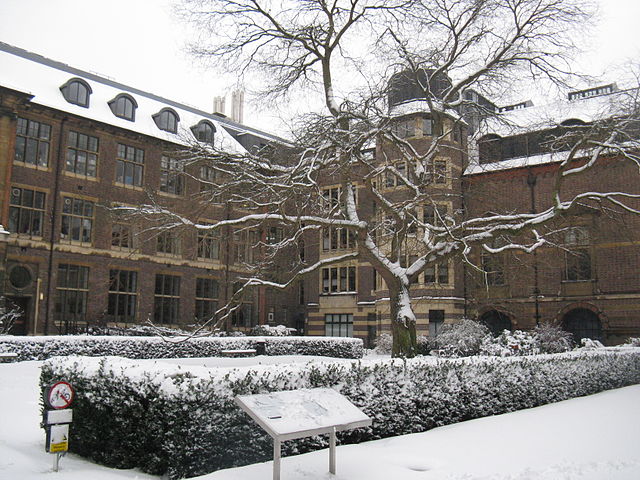
Thammasat University students may wish to consider downloading with their TU WiFi account some free books available from the Cambridge Core Collection.
The Cambridge Handbook series includes informative reference volumes on such academic subjects as psychology, language and linguistics, law, management, life sciences, sociology, medicine, anthropology, psychiatry, philosophy, area studies, economics, education, computer science, mathematics, art, books for teachers, earth and environmental sciences, literature, politics and international relations.
TU students might try searching their subject of study along with the words “Cambridge Handbook” at the Cambridge Core Collection website to see if a book relevant to their interests is available.
Conveniently available in searchable pdf format, these volumes may be helpful for future academic research projects and thesis preparation.
Examples of recently published volumes in the Cambridge Handbooks series include The Cambridge Handbook of Compliance edited by Professor Benjamin van Rooij of the University of California, Irvine School of Law and Professor D. Daniel Sokol of the University of Florida, both in the United States of America.
The abstract for the Introduction: Compliance as the Interaction between Rules and Behavior is as follows:
Compliance has become important in our contemporary markets, societies, and modes of governance across very different public and private domains, stimulating a rich body of empirical work and practical expertise. Yet, so far, we do not have a comprehensive understanding of what compliance is and what mechanisms and interventions play a role in shaping it, or how compliance shapes various fields. Thus far, the academic knowledge of compliance has remained siloed in different disciplinary domains, and along different regulatory and legal spheres and different mechanisms and interventions. This chapter, which is the introduction to The Cambridge Handbook of Compliance, offers a comprehensive view of what compliance is. It takes a broad approach in seeing compliance as the interaction between rules and behavior. It discusses what different mechanisms and interventions are at play in shaping such compliance. And it reflects on the different methods for studying compliance and their inherent limitations.
Another recent publication in the Cambridge Handbooks series is The Cambridge Handbook of Environmental Justice and Sustainable Development edited by Professor Sumudu A. Atapattu of the University of Wisconsin School of Law, Professor Carmen G. Gonzalez of Loyola University Chicago School of Law, and Professor Sara L. Seck of Dalhousie University (Nova Scotia) Schulich School of Law.
As the editors note in an introduction that in the world today,
unbridled economic activity threatens irreversible ecological harm. In the name of “development,” human beings have caused massive ecosystem destruction and species extinction, disrupted the planet’s climate, and generated vast amounts of toxic waste – exceeding the assimilative and regenerative capacity of nature.
Global statistics are sobering. The world has entered a sixth wave of mass extinction where, according to some estimates, 27,000 species vanish every year and about one million species currently face extinction.3 Climate change is accelerating more rapidly than scientists predicted, leading the World Meteorological Organization to warn that lack of aggressive mitigation measures will likely result in a catastrophic temperature increase of 3–5 degrees Celsius (5.4–9.0 degrees Fahrenheit) above preindustrial levels by 2100. In 2016, the world generated 242 million tons of plastic waste. If present trends continue, there will be more plastic in the oceans than fish by 2050. Between 1945 and the present, the worldwide generation of hazardous waste increased from 5 million to 400 million tons per year. Much of this waste is generated in affluent countries (the Global North) and is exported to poor and middle-income countries (the Global South) for disposal – a practice that has been denounced as “toxic colonialism.” From heavy metals in soils to the chemical contamination of air and water, the extraction of wealth from nature and the disposal of wastes has rendered some places on earth so toxic that they are not suitable for human habitation. Every year, air pollution kills more than seven million people, while lack of access to fresh water and sanitation has been linked to the death of five million people per year.
It is important to recognize that not every person or every state contributed equally to environmental destruction. Nor do all segments of society lead unsustainable lifestyles. Sadly, those who contributed the least to environmental degradation are disproportionately exposed to the resulting harm. In affluent and impoverished countries alike, it is the poor and vulnerable who pay the price for the consumption-driven lifestyles of national and global elites. This imbalance between those who benefit from economic activity and those who bear its adverse social and environmental impacts is one of the hallmarks of environmental injustice.
This volume seeks to examine the complex and multidimensional forms of oppression that produce environmental injustice at the national and international level and the legal frameworks and strategies that have been deployed to combat these injustices. The goal is to develop a more robust conception of environmental justice by engaging with the literature on sustainable development and human rights – particularly the often-neglected social pillar of sustainable development. As many of the case studies in this volume illustrate, environmental justice struggles overlap with struggles for other forms of justice. Despite these overlaps and intersections, the literature on environmental justice often treats them as single, isolated challenges without taking the larger context and underlying historical causes into consideration. As a result, the “solutions” that are adopted or proposed do not address the structural issues that give rise to intersecting forms of injustice, many of them dating back to the colonial era. And the separation of environmental law from other bodies of law makes it impossible to address the root causes of many of these injustices in economic, trade, and investment law.
Still other examples of recently published Cambridge Handbook titles of special interest for TU students in the Faculty of Law are The Cambridge Handbook of Class Actions: An International Survey edited by Professor Brian T. Fitzpatrick and Professor Randall S. Thomas, both of the Vanderbilt University School of Law, The United States of America, and The Cambridge Handbook of Copyright Limitations and Exceptions edited by Professor Shyamkrishna Balganesh of the University of Pennsylvania Law School, Professor Ng-Loy Wee Loon of the National University of Singapore School of Law, and Professor Haochen Sun of the University of Hong Kong Faculty of Law.
The preface of the latter volume indicates:
Together, the chapters in this volume are intended to serve as a ready guide to students, scholars, and policymakers around the world working on copyright limitations and exceptions, arousing their interest in learning more about the role of this important area of law in different legal systems. While the volume has consciously refrained from framing discussions in the traditional “comparative law” mold, it has nevertheless attempted to be exhaustive in its topical and methodological coverage, in the abiding hope that the comparative discussion of copyright limitations and exceptions will become a mainstay of intellectual property conversations and debates in the years to come.
(All images courtesy of Wikimedia Commons)


